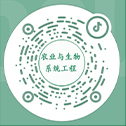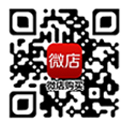Performance testing and analysis of flexible composite walls in assembled solar greenhouse
-
摘要:
为解决装配式日光温室柔性墙体蓄热能力不足的问题,该研究通过在墙体内侧附加蓄热层的方式,设计了一种集蓄热、保温和防水多功能于一体的装配式柔性复合墙体。首先,通过对多种材料进行综合性能评估,筛选出优质的表层材料和保温材料,将其复合制成柔性保温墙体;其次,将水、沙子、相变水凝胶(phase change hydrogel,PCH)作为蓄热层固定在柔性保温墙体内侧,从而形成柔性复合墙体;最后,在4个模型温室中分别对墙体进行性能测试,以未附加蓄热层的柔性保温墙体为对照(CK),分析试验墙体的蓄热和保温性能。单一墙体材料的性能测试结果表明,表层材料中镀铝编织布、黑色淋膜毡抗拉性能好且不透水,断裂强力分别为1.06、0.56 kN,断裂伸长率分别为30.99 %、65.91 %;保温材料中再生棉、太空棉和空气柱保温效果较好且使用成本低,热阻值分别为0.30、0.50、0.76 (m2·℃)/W。柔性复合墙体的性能测试结果表明,所有处理中5 kg/m2 PCH柔性复合墙体的蓄热和保温性能最佳,热阻值为2.50 (m2·℃)/W,单位面积累计吸热量与放热量分别为1.48、1.13 MJ/m2;在典型晴天和阴天条件下,该处理的夜间室内平均温度分别比CK提高了3.08、1.87 ℃。上述分析结果表明,通过在柔性保温墙体内侧附加相变蓄热层的方式,能够增强墙体的蓄热和保温性能。研究结果可为今后装配式日光温室柔性复合墙体设计及材料选择提供理论依据。
Abstract:In order to solve the issue of limited heat storage capacity of assembled solar greenhouse wall, an assembled flexible composite wall incorporating heat storage, insulation, and waterproof functionalities was developed by integrating a heat storage layer within the wall structure. Initially, after evaluating the performance of various materials, premium surface and insulation materials were meticulously chosen and combined to create a flexible insulation wall. Subsequently, according to the different types and amounts of thermal storage materials on the surface of flexible insulation wall, six experimental treatments were designed in this study: The surface of A1, A2 and A3 wall were treated with the same amount of phase change hydrogel(PCH), water and sand thermal storage materials, respectively; The surface of A4, A5 and A6 wall were 5, 4 and 3 kg/m2 PCH thermal storage materials, respectively. Finally, the wall performance was tested in four model greenhouses and the flexible insulation wall without thermal storage layer was taken as the control (CK) to analyze the thermal storage and insulation performance of the treatment wall by collecting related indexes such as indoor temperature, wall temperature and heat flux.The analysis of individual wall components revealed that the surface materials of aluminized woven cloth and black coated felt had excellent tensile and impermeable properties with the breaking force of 1.06, 0.56 kN and breaking elongation of 30.99 %, 65.91 %, respectively. In the insulation materials, the thermal resistance of recycled cotton, space cotton, and air column were 0.30, 0.50 and 0.76 (m2·℃)/W, respectively, which had the advantages of efficient insulation effect and low usage cost. When all treatments were tested in model greenhouses, the test results of A1, A2 and A3 showed that the heat storage effect of latent heat storage material of PCH was better than water and sand. This indicated that the A1 wall had the best heat storage and insulation performance and the maximum heat absorption and release per unit area were 0.91 and 0.73 MJ/m2, respectively; Under typical sunny and cloudy conditions, the average indoor temperature of the A1 at night was 2.74 and 1.20 ℃ higher than CK and the average wall temperature at night was 7.33 and 2.34 ℃ higher than CK, respectively. The test results of A4, A5 and A6 showed that with the increase of the amount of PCH thermal storage material, the thermal storage and insulation effect of the wall gradually increased. This indicated that the A4 wall had the best thermal storage and insulation performance, and the maximum heat absorption and release per unit area were 1.48 and 1.13 MJ/m2, respectively; Under typical sunny and cloudy conditions, the average indoor temperature of the A4 wall at night was 3.08 and 1.87 ℃ higher than CK and the average wall temperature at night was 7.16 and 3.02 ℃ higher than CK. The above analysis shows that the notable enhancement in heat storage and insulation efficiencies is achieved by incorporating a phase change heat storage layer within the flexible insulation wall.This study can provide theoretical basis for the design and material selection of flexible composite wall of assembled solar greenhouse in the future.
-
0. 引 言
东北地区苏打盐碱地是中国盐碱地的主要集中区,对盐碱土壤进行改良研究与实践,使之适宜农作物的生长发育,对提高粮食安全具有重要意义[1-2]。针对东北苏打盐碱地特征,课题组设计了一种具有叶脉状内通道的深松铲[3],可以实现自润减阻配合改良液层施,进而达到改良东北地区苏打盐碱土的目的。目前多孔分布管广泛应用于给排水、滴喷灌等领域[4]。为研究其出流特性,国内外众多学者开展了大量分析研究[5]。不同学者针对不同情况下对多孔管内流体分布的计算方程进行推导, RAVIKUMAR等[6]建立了分析方程来确定压力的变化系数,推导出计算流量变化系数的简单解析方程,用于求解数值问题中的流量变异系数;CHELLAM等[7]研究了具有1道和2道可渗透壁的均匀多孔管内不可压缩层流的特性,建立了四阶微分方程并得到了所有壁面雷诺数的解;刘文华等[8]结合水力学分析理论,对坡度、压力水头、孔距、管长4个参数对沿程压力分布的影响规律开展研究;杜涛等[9]建立多孔管出流控制体模型并对达西-韦斯巴赫公式进行完善,得出了多孔管沿程水头损失的计算公式;一些学者通过物理试验方法对多孔管的液体出流进行了相应研究,王亚朦等[10]根据达西-韦斯巴赫公式,结合理论分析与试验的方法,对不同坡度下多孔分布管内流体压力分布规律开展研究;鞠学良等[11]根据微灌毛管水力解析模型,提出了考虑适宜布置形式的均匀坡微灌毛管设计方案以提高灌水均匀度;杨宝中等[12]结合单孔出流试验结果,对多孔管土中出流计算公式进行分析研究,为多孔管地下灌溉提供参考;随着计算流体动力学的发展,数值模拟技术已成为研究单相流和结构优化的重要工具,钱卫忠等[13]使用有限元分析的方法分析多孔管孔径、管长、水压等因素对多孔管出流速度和流量的影响,并得到影响多孔管出流速度及出流量影响显著的因素;王鹏辉[14]提出了基于CFD的“流场分析设计方法”并对喷淋装置几何结构进行了设计优化;韩圆圆[15]通过数值模拟的方法分析了T型三通管内的气液流动特性及相分布规律。
综上,关于多孔管出流速度及出流量的研究多与水利灌溉工程相关,目前未见将其与深松部件结合的相关研究。针对叶脉状内通道的流场分布规律及影响因素不明确的问题,本文拟采用基于计算流体动力学的仿真方法结合物理试验对其进行研究。首先利用仿真的方法,开展单因素试验,优选出影响内通道分支出口流速的因素水平范围值,其次开展Box-Behnken试验,建立各影响因素与分支出口流速之间的二阶回归模型,进而得到最优参数组合。按最优参数组合条件对叶脉状内通道进行设计加工后进行相应的物理试验,得出物理试验值。通过仿真与物理试验结果的对比,检验叶脉状内通道结构优化设计的效果,从而达到对叶脉状内通道优化设计的目的,为利用叶脉状内通道多分支出口管结构在东北地区苏打盐碱地进行深松及化学改良耦合技术提供理论基础。
1. 数值计算模型与计算方法
1.1 数值计算模型
以课题组自研的叶脉状内通道自润滑减阻深松铲的内部结构——叶脉状内通道多分支出口管为研究对象。其深松铲结构由铲柄、弧形铲刃、凿型铲尖及叶脉状多分支出口内通道组成。深松铲铲体长度为1200 mm,其中铲柄长500 mm,弧形铲刃长600 mm,铲尖长100 mm,铲刃横截面为等腰三角形且刃口角度为42°。叶脉状内通道与深松铲铲柄及弧形铲刃的总长度尺寸一致,由主通道直管部分及弧形叶脉状多分支出口管两部分构成,其总长度为1100 mm,主通道直径10 mm,直管部分长度500 mm,弧形叶脉状多分支出口管部分是半径550 mm的圆弧,其长度为600 mm。其中每组分支出口由两个在主通道X轴线上呈42°夹角对称分布的分支出口组成,同时每组分支出口在Y轴上以相同间距在叶脉状内通道多分支出口弧形管段上均匀分布。其叶脉状内通道深松铲及内通道多分支出口管结构如图1。
![]() 图 1 叶脉状内通道深松铲与叶脉状内通道多分支出口管结构图1.主通道 2.深松铲体 3.深松铲刃口夹角42° 4.直管部分 5.弧形管部分 6.末端分支出口 7.分支出口夹角42° 8.首端分支出口 9.主通道入口Figure 1. Structure diagram of deep loosening shovel and a porous pipe flow channel model in leaf vein shaped inner channel1.Main channel 2.Deep loosening shovel body 3. Deep loosening shovel blade angle 42° 4. Straight pipe section 5. Curved tube section 6. End branch outlet 7. Branch outlet angle 42° 8. The head branch outlet 9. Main channel entrance
图 1 叶脉状内通道深松铲与叶脉状内通道多分支出口管结构图1.主通道 2.深松铲体 3.深松铲刃口夹角42° 4.直管部分 5.弧形管部分 6.末端分支出口 7.分支出口夹角42° 8.首端分支出口 9.主通道入口Figure 1. Structure diagram of deep loosening shovel and a porous pipe flow channel model in leaf vein shaped inner channel1.Main channel 2.Deep loosening shovel body 3. Deep loosening shovel blade angle 42° 4. Straight pipe section 5. Curved tube section 6. End branch outlet 7. Branch outlet angle 42° 8. The head branch outlet 9. Main channel entrance1.2 数值模型网格划分
数值模拟计算中选取的叶脉状内通道多孔管的流体计算流域为主通道入口至叶脉状多分支出口处。采用ICEM中的O-Block技术进行流体计算域网格划分[16],可获得较规整的结构网格和较好的边界层网格。计算域采用适应度较强的非结构四面体网格进行划分,算法采用补丁适形法,采用美国机械工程协会(American Society of Mechanical Engineers,ASME)推荐的网格收敛指数 GCI 进行网格离散误差的估计,对网格进行无关性验证[17-19]。最终确定选取中等网格,此时的模型网格总数为198353个,节点总数为43799个,并检查网格问题与质量,结果显示平均网格质量、偏度和纵横比分别为0.837、0.228、1.85, 所生成网格的质量较高,符合本文计算要求。
1.3 数值计算方法及试验设计
1.3.1 数值计算方法
图2为多孔管计算域网格。液体入口位于直管部分顶端,出口位于弧形管部分上的各分支出口上,其余位置均密闭,壁面处设置为无滑移壁面,计算流体使用不可压缩的液态水,进口边界选择流速入口边界条件,对于出口边界条件,采用压力出口边界条件压力值为0,参考压力为标准大气压[20]。采用k-ε湍流模型,依靠计算流体力学求解软件Fluent进行求解[21-24]。在多孔管设置中给定主通道入口流速,经过软件模拟可得到多孔管在该主通道入口流速下达到稳定状态时的内通道各分支出口流速。
1.3.2 试验设计
文章中所讨论的叶脉状内通道分支多孔管,目的是在深松过程中,利用分支出口流出的液体改良剂在铲刃面上形成液膜达到自润滑减阻目的,同时利用流出的改良剂对盐碱地进行化学改良。这就需要每组分支出口的流速要达到一定要求,同时每组分支出口的流量也要达到一定要求,通过大量田间试验发现,叶脉状内通道的结构参数(孔径、孔间距、孔数)及运行参数(主通道入口流速)对分支出口的出流速度及液膜的形成起到决定性作用。因此本文选择分支出口的孔径、孔间距、孔数及主通道入口流速为研究因素。其中孔径即为分支出口的直径,孔间距即为相邻两组分支出口的距离,孔数即为分支出口的组数,主通道入口流速即为改良剂流入主通道的速度。
结合实际工况及多次预试验发现,分支出口6 mm以下的孔径所流出的液体在深松过程中不能够形成将整个深松铲铲面完全覆盖的液膜,即不能保证流量要求,因此选择6 mm以上的孔径进行讨论。分支出口孔间距距离太小及孔数过少则达不到分层减阻及化学改良液层施时所需效果,同时分支出口孔间距距离太大及孔数过多则使最末端分支出口流量太小。在确保各组分支出口的表面积流速大于1 m/s以及所流出的液体能够使铲刃面形成液膜的前提下,初步确定叶脉状内通道分支出口孔径、孔间距、孔数和主通道入口流速4个因素的水平取值范围,进而开展单因素仿真模拟试验,对因素水平进行初步优选,以确定各因素最佳工作水平范围,具体因素水平见表1。研究单因素对各组分支出口流速的影响时,其他因素取中间水平值。
表 1 叶脉状内通道多孔管数值模拟参数Table 1. Numerical simulation parameters of leaf vein shaped inner channel porous tube水平
Factors分支出口孔径
Branch outlet
aperture D/mm分支出口孔间距
Branch outlet
hole spacing
A/mm孔数
Hole number
B主通道入口流速
Main channel
inlet velocity
C/(m·s−1)1 6 80 3 3 2 7 90 4 4 3 8 100 5 5 4 9 110 6 6 5 10 120 7 7 内通道分支出口截面上的最大流速即为表面积最大流速,内通道分支出口截面上的平均流速即为平均流速,两种流速表达的含义不同。距主通道入口最近的一组分支出口即为首端出口,距主通道入口最远的一组分支出口即为末端出口;主通道入口流速在沿程上经过首端或末端分支出口的分流而减少的值即为首端或末端出口分流损失;主通道入口流速在沿程上经过各分支出口的分流而减少的值与主通道入口流速的比值即为流速的分流损失率,以此来量化表征主通道入口流速经过各分支出口被分流的多少,进而分析不同影响因素水平对流速的影响大小。即:首端出口分流损失等于主通道入口流速减去首端分支出口流速;末端出口分流损失等于主通道入口流速减去末端分支出口流速;首末端出口分流损失等于首端分支出口流速减去末端分支出口流速;首端出口分流损失率等于首端出口分流损失与主通道入口流速的比值;末端出口分流损失率等于末端出口分流损失与主通道入口流速的比值;首末端出口分流损失率等于首末端出口分流损失与首端分支出口流速的比值。
2. 结果与分析
2.1 叶脉状内通道多分支出口管沿程流速变化规律
图3为叶脉状内通道主通道流速剖面图。由图3发现叶脉状主通道上沿程流速变化趋势为先逐渐增大后逐渐减小。以叶脉状内通道多分支出口管主通道直径10 mm、内通道分支出口孔径6 mm、孔间距100 mm、孔数5、主通道入口端流速5 m/s时为例,叶脉状主通道上最大流速值为5.736 m/s,最小流速为0。沿程流速从入口处开始逐渐增加直至首组分支出口处上端达到沿程流速最大值,经过首端分支出口下端后开始逐渐减小,在达到末端分支出口后沿程流速逐渐减小至最小值。出现主通道内部沿程流速先逐渐增大后逐渐减小的原因,可能是在射流和惯性重力及离心力的影响作用下,在主通道内部产生沿程流速加速现象,使主通道内部沿程流速先逐渐增大到流速最大值[25];随后液体经过首组内通道分支出口后压力减小,液体开始逐级分流,沿程流速开始逐渐减小。
2.2 单因素试验结果
通过对初步确定的影响叶脉状内通道分支出口流速的因素进行单因素试验,根据试验数据分析各因素对分支出口流速的影响情况,进一步确定参数范围,试验结果如图4所示。
![]() 图 4 各因素下的内通道分支出口平均流速注:B1为首端分支出口;B2为第二分支出口;B3为第三分支出口;B4为第四分支出口;B6为第六分支出口;B5和B7为末端分支出口。Figure 4. Average flow velocity at the outlet of internal channel branches under various factorsNote:B1is the head branch outlet; B2 is the second branch outlet; B3 is the third branch outlet; B4 is the fourth branch outlet; B6 is the sixth branch outlet; B5 and B7 are the end branch outlet.
图 4 各因素下的内通道分支出口平均流速注:B1为首端分支出口;B2为第二分支出口;B3为第三分支出口;B4为第四分支出口;B6为第六分支出口;B5和B7为末端分支出口。Figure 4. Average flow velocity at the outlet of internal channel branches under various factorsNote:B1is the head branch outlet; B2 is the second branch outlet; B3 is the third branch outlet; B4 is the fourth branch outlet; B6 is the sixth branch outlet; B5 and B7 are the end branch outlet.2.2.1 分支出口孔径对流速的影响
根据图4a可知,随着内通道分支出口孔径的增加,同一分支出口下的流速逐渐减小,同一孔径下的各分支出口流速逐渐减小。当孔径由6 mm增加到10 mm时,表面积最大流速的首端出口分流损失率、末端出口分流损失率及首末端出口分流损失率均逐渐增加,当孔径为6 mm时,表面积最大流速的三种分流损失率分别为4.43%、38.52%和35.67%,均为最小。同时随着孔径的增加内通道分支出口平均流速的首端出口分流损失率、末端出口分流损失率及首末端出口分流损失率同样均逐渐增加,当孔径为6 mm时,平均流速的三种分流损失率分别为67.14%、58.32%和−26.83%,均为最小。孔径由6 mm增加到10 mm时,内通道分支出口表面积最大流速首端出口减小1.567 m/s,末端出口减小1.878 m/s;平均流速首端出口减小0.657 m/s,末端出口减小1.475 m/s。根据结果数据发现在主通道入口流速统一的情况下,内通道分支出口孔径越小,相邻两分支出口的出流速度差值变化越小,随着分支出口孔径的增加,同一孔径下相邻两分支出口出流速度差值逐渐增加,进而使各个分支出口平均流速减小。在孔径为6 mm时液体出流速度最快,因此液体流量也最大,能够达到自润滑减阻的目的。因此优选出叶脉状内通道多孔管模型内通道分支出口孔径为6 mm。
2.2.2 分支出口孔间距对流速的影响
根据图4b可知在内通道分支出口孔间距增加的情况下,内通道分支出口首端出口流速逐渐增大,末端出口流速逐渐减小,这是因为分支出口流速随着孔间距的增加在第二、三分支出口之后降幅开始加剧。同一孔间距下各分支出口流速整体上逐渐减小,只有当孔间距为80 mm时各分支出口流速先增加后减小。当孔间距为80 mm时,首端出口分流损失率同其他孔间距相比最大为26.30%;末端出口分流损失率及首末端出口分流损失率同其他孔间距相比最小,分别为60.22%和46.02%。当孔间距为120 mm时,首端出口分流损失率同比最小为15.46%;末端出口分流损失率及首末端出口分流损失率同其他孔间距相比最大,分别为68.58%和62.83%。同时随着孔间距的增加内通道分支出口平均流速的首端出口分流损失率、末端出口分流损失率及首末端出口分流损失率变化同表面积最大流速变化趋势一样。孔间距由80 mm增加到120 mm时,内通道分支出口表面积最大流速首端出口增加0.542 m/s,末端出口减小0.418 m/s;平均流速首端出口增加0.268 m/s,末端出口减小0.285 m/s。在主通道入口流速统一的情况下,内通道分支出口孔间距越小对各分支出口的首端出口出流速度影响变化较大,反而对末端出口出流速度影响变化较小,当孔间距由90 mm增加到110 mm时流速变化不大,这是叶脉状内通道分支出口这一结构造成的,但在对因素水平讨论优选的过程中是有必要的,因为在实际工作环境中分支出口的位置关系到改良剂液体对深松铲减阻的部位,以及利用叶脉状内通道这一结构进行化学改良过程中,达到化学改良剂分层施用这一目的。因此考虑综合实际试验因素,优选出叶脉状内通道多孔管模型内通道分支出口孔间距90、100、110 mm进行Box-Behnken仿真试验,进一步探究孔间距及其它因素水平交互下对分支出口流速的影响。
2.2.3 分支出口孔数对流速的影响
根据图4c可知在内通道分支出口孔数增加的情况下,内通道分支出口首末端流速均逐渐减小,同一孔数下各分支出口流速整体上是逐渐减小的,只有当孔数为3时各分支出口流速逐渐增加。孔数由3增加到7时,内通道分支出口表面积最大流速的首端出口分流损失率、末端出口分流损失率及首末端出口分流损失率均先增加后减小,当孔数为3时,三种分流损失率均为最小,分别为10.23%、21.49%和12.54%。当孔数为7时,此时首端出口分流损失率不是最大,分别为24.20%、67.44%和57.05%。同时随着孔数的增加内通道分支出口平均流速的首端出口分流损失率、末端出口分流损失率及首末端出口分流损失率变化同表面积最大流速变化趋势一样。孔数由3增加到7时,内通道分支出口表面积最大流速首端出口减少0.698 m/s,末端出口减小2.298 m/s;平均流速首端出口增加0.455 m/s,末端出口减小1.663 m/s。在主通道入口流速统一的情况下,内通道分支出口孔数越少对各分支孔的首末两端组出流速度影响变化越小,通过试验数据可以得出孔数在4~6时对流速影响变化幅度适中,同时为了考虑综合实际试验因素,优选出叶脉状内通道多孔管模型内通道分支出口孔数4、5、6进行Box-Behnken仿真试验,进一步探究孔数对分支出口流速的影响。
2.2.4 主通道入口流速对流速的影响
根据图4 d可知在内通道主通道入口流速增加的情况下,内通道各分支出口的流速是逐渐增大的,同一主通道入口流速下各分支出口流速先增加后逐渐减小。主通道入口流速由3 m/s增加到7 m/s时,内通道分支出口表面积最大流速的首端出口分流损失率逐渐增加,末端出口分流损失率逐渐减少,当主通道入口流速为3 m/s时,首端出口分流损失率同比最小为14.83%;末端出口分流损失率及首末端出口分流损失率同比最大为82.74%和79.74%。当主通道入口流速为7 m/s时,首端出口分流损失率同比最大为26.03%;末端出口分流损失率及首末端出口分流损失率同比最小为54.53%和38.53%。同时随着主通道入口流速的增加内通道分支出口平均流速的首端出口分流损失率先减少后增加,末端出口分流损失率及首末端出口分流损失率均减少。当主通道入口流速为7 m/s时,首端出口分流损失率为78.58%,末端出口分流损失率及首末端出口分流损失率74.38%和−19.58%,均为最小。在其他因素不变的情况下,主通道入口流速为5、6、7 m/s时首端出口分流损失率、末端出口分流损失率及首末端出口分流损失率均为中间值,因此优选出叶脉状内通道多孔管模型内通道分支出口主通道入口流速为5、6、7 m/s进行Box-Behnken仿真试验,进一步探究主通道入口流速对分支出口流速的影响。
3. Box-Behnken仿真试验
基于单因素仿真试验中优选出的各因素范围,设计二次回归正交试验,建立叶脉状内通道分支出口平均流速回归模型,以得到最优参数组合[26]。内通道分支出口孔径在单因素试验中已经优选出最优值为6 mm,其他因素水平如表2所示,Box-Behnken试验设计及结果如表3所示。
表 2 因素水平表Table 2. The factor level table水平
Level分支出口孔间距
Branch outlet
hole spacing
A/mm分支出口孔数
Holes number of branch
outlet B主通道入口流速
Main channel
inlet velocity
C/(m·s−1)−1 90 4 5 0 100 5 6 1 110 6 7 表 3 Box-Behnken试验设计及结果Table 3. Box Behnken experimental design and results序号No. X1 X2 X3 出口流速Outlet velocity/(m·s−1) 1 −1 −1 0 6.069 2 1 −1 0 5.896 3 −1 1 0 5.483 4 1 1 0 5.889 5 −1 0 −1 4.713 6 1 0 −1 4.961 7 −1 0 1 6.456 8 1 0 1 6.806 9 0 −1 −1 4.903 10 0 1 −1 4.769 11 0 −1 1 7.263 12 0 1 1 6.334 13 0 0 0 5.621 14 0 0 0 5.685 15 0 0 0 5.679 16 0 0 0 5.558 17 0 0 0 5.681 注:X1、X2、X3分别为分支出口孔间距、分支出口孔数、主通道入口流速的水平值。 Note: X1, X2, X3 are the levels of branch outlet hole spacing, branch outlet hole number, main channel inlet velocity respectively. Box-Behnken试验方差分析结果如表4所示,由表4的分析结果可知,X2、X3和X2X3对平均流速影响极其显著, X1、X1X2和X 22对平均流速影响显著;X1X3、X12和X32对平均流速影响不显著。模型的P<0.0001,说明回归模型高度显著;模型失拟项P>0.05,说明模型失拟性不显著,回归模型拟合程度高。回归方程决定系数R2=0.9911,校正决定系数R2=0.9796,与1非常接近,且变异系数CV=1.75%。根据统计学上F值越大、表明该因素对结果的影响越大[27-28],通过F值大小,可以判定各因素对平均流速影响的重要性,试验因素对平均流速影响从大到小为主通道入口流速、内通道分支出口孔数、内通道分支出口孔间距;综上表示该回归模型极其显著,能够可靠和真实的反映真实情况,可用于进一步的目标平均流速的预测分析。
表 4 Box-Behnken试验方差分析Table 4. Variance analysis of Box Behnken experiment方差源
Variance
source均方
Mean
square自由度
Degree of
freedom平方和
Sum of
squareF值
F-valueP值
P-value模型Model 7.830 9 0.870 86.21 <0.0001** X1 0.086 1 0.086 8.55 0.0222* X2 0.343 1 0.343 33.96 0.0006** X3 7.060 1 7.060 698.99 <0.0001** X1X2 0.084 1 0.084 8.30 0.0236* X1X3 0.003 1 0.003 0.26 0.6273 X2X3 0.158 1 0.158 15.65 0.0055** X1² 0.012 1 0.012 1.18 0.3141 X2² 0.078 1 0.078 7.75 0.0271* X3² 0.006 1 0.006 0.54 0.4849 残差
Residual0.071 7 0.010 失拟项
Lack of fit0.059 3 0.020 6.39 0.0525 纯误差
Pure error0.012 4 0.003 总和Sum 7.900 16 注: **表明影响极显著(P<0.01),*表明影响显著(P<0.05)。 Note: ** indicates that the impact is extremely significant (P<0.01), and * indicates that the impact is significant (P<0.05). 通过Design–Expert 11.0对Box-Behnken试验结果进行多元回归拟合,得到仿真试验出口流速二阶回归方程:
V=5.64+0.104X1−0.207X2+0.939X3+0.145X1X2+0.026X1X3−0.199X2X3+0.053X21+0.136X22+0.036X23 (1) 在Design–Expert 11.0软件的优化模块中,以分支出口平均流速最大值为优化目标值,将二阶回归方程式(1)中的不显著项剔除后进行优化求解,求解出最优参数组合为内通道分支出口孔间距110 mm、内通道分支出口孔数4、主通道入口流速7 m/s。
为验证仿真优化参数的可靠性,在最优参数条件下进行3次Fluent仿真模拟,得到分支出口平均流速为3.262、3.255、3.275 m/s,其平均值为3.264 m/s。
4. 试验验证
根据数值模拟选定的最优参数组合,加工出用于验证试验的叶脉状内通道多孔管,主通道入口端通过软管、阀门、流量计、变径接头与增压泵相连接构成试验通路,各分支出口由软管及量杯进行承接构成泄放通路,主通道入口流速通过控制流量计算获得,液体流动示意图及实际装置见图5。
![]() 图 5 叶脉状内通道多分支出口流动示意图及试验装置图1.叶脉状内通道深松铲 2.深松铲卡钳 3.流量计 4.变径接头 5.水箱 6.机架 7.软管 8.量杯 9.分支出口Figure 5. Schematic diagram and experimental setup diagram of multi branch outlet flow in leaf vein like internal channels1.Vein shaped inner channel deep loosening shovel 2. Deep loosening shovel caliper 3. Flowmeter 4. Reducer union 5. Water tank 6. Frame 7. Hose 8. Counting cup 9. Branch outlet
图 5 叶脉状内通道多分支出口流动示意图及试验装置图1.叶脉状内通道深松铲 2.深松铲卡钳 3.流量计 4.变径接头 5.水箱 6.机架 7.软管 8.量杯 9.分支出口Figure 5. Schematic diagram and experimental setup diagram of multi branch outlet flow in leaf vein like internal channels1.Vein shaped inner channel deep loosening shovel 2. Deep loosening shovel caliper 3. Flowmeter 4. Reducer union 5. Water tank 6. Frame 7. Hose 8. Counting cup 9. Branch outlet因无法直接测定各分支出口流速,利用图5中量杯,通过软管与深松铲分支出口进行密闭连接,当深松铲达到稳定工作水平状态时,测量出单位时间内各个分支出口所流出液体量Q,根据液体流量计算式(2)计算各分支出口的平均流速[29-31]。
Q=SV (2) 式中Q为分支出口流量,L/min;S为分支出口面积,cm2;V为分支出口平均流速,m/s。
在最优参数组合下,经过3次重复物理试验计算出内通道分支出口平均流速值为2.988、3.102、2.824 m/s,其平均值为2.971 m/s。与仿真值平均误差为8.97%,验证了数值模拟的可靠性,同时检验了叶脉状内通道结构优化设计的效果。分析各分支出口的平均流速小于数值模拟,造成该数据异常的原因可能是实际多分支开孔处不平整,增加了叶脉状内通道多分支出口处的压力损失;另外,实际管路开孔直径的精度有限,而分支孔管出流量对孔径的变化较为敏感,孔径的变化都会对管的流量造成一定的影响。
5. 结 论
1)通过数值仿真分析得到叶脉状内通道多孔管主通道上的沿程流速变化规律为先增大后减小。沿程流速从入口处开始逐渐增加直至首端分支出口处上端达到沿程流速最大值,经过首端分支出口下端后开始逐渐减小,在达到最末组出口端后沿程流速逐渐减小至最小值。
2)采用单因素仿真分析对4个因素进行初步优选,以流速最大为前提,优选出内通道分支出口孔径为6 mm、孔间距为90、100、110 mm、孔数为4、5、6、主通道入口流速为5、6、7 m/s。
3)利用Design–Expert 11.0对仿真数据进行分析,求解得到最优参数组合为内通道分支出口孔间距为110 mm、孔数为4、主通道入口流速为7 m/s。对流速影响因素大小依次为主通道入口流速、内通道分支出口孔数、内通道分支出口孔间距。
4)在最优参数组合下进行仿真与物理试验,内通道分支出口平均流速分别为3.264 m/s和2.971 m/s,误差为8.97%。
-
图 4 典型天气A1—A3处理室内温度、墙体温度和热通量变化
注:墙体温度为5~8号测点所记录的墙体内表面蓄热材料温度的平均值,分析时段为08:00至次日08:00,下同。
Figure 4. Variation of indoor temperature, wall temperature and heat flux for treatments A1 to A3 on typical weather
Note: Wall temperature is the average temperature of the heat storage materials on the inner surface of the wall recorded by measuring points 5-8; The analysis period is 08:00 to 08:00 of the next day, the same as below.
表 1 试验材料
Table 1 Test materials
种类
Specie名称
Name成分
Element制作工艺
Production technology表层材料
Surface materials镀铝编织布 铝膜、聚乙烯、编织布 真空镀铝、热压复合 玻纤铝箔布 玻璃纤维布、铝箔 胶水粘合、机压复合 涂银防水布 牛津布或涤塔夫面料 涂银、防水剂处理后加工 黑色PE编织布 聚乙烯 拉丝纺纱、织造加工 黑色淋膜毡 聚乙烯薄膜、合成纤维 热压复合 彩条布 聚丙烯塑料、聚乙烯防水膜 高温编制后覆膜 牛皮纸复合
编织布聚乙烯、编织布、
牛皮纸热压复合 丙纶布 聚丙烯颗粒 高温、高压喷丝编织,冷却成型 保温材料
Thermal insulation materials塑料薄膜 聚乙烯颗粒 热熔、挤出成型、
冷却固化珍珠棉 聚乙烯颗粒 高温发泡、压制成型 黑色拉力毡 涤纶短纤 针刺、热压 花色毛毡 合成纤维 针刺、热压 再生棉 废弃纺织品、棉花 纺纱、织造加工 低密度海绵 聚醚多元醇 高温发泡,冷却成型 气凝胶毡 二氧化硅气凝胶、
玻璃纤维溶胶、凝胶法或
干燥、焙烧法太空棉 涤纶弹力绒絮、
金属镀膜高温熔融、针刺加工 硅酸铝纤维棉 硅酸铝纤维 喷吹、甩丝成纤工艺 玻璃棉 玻璃纤维 熔融喷吹或旋转法 聚酯纤维棉 聚酯纤维、棉纤维 纺纱、织造加工 空气柱 气体、聚乙烯、尼龙 共挤成型 玻璃棉板 玻璃纤维 高温熔融、热压成型 挤塑聚苯板 聚苯乙烯树脂、催化剂 高温发泡、冷却成型 橡塑棉板 丁晴橡胶 高温发泡、冷却成型 表 2 试验处理及墙体物性参数
Table 2 Test treatment and wall physical property parameters
试验处理
Test treatment墙体材料
Wall materials单位面积质量
Mass per unit area(MPUA)/
(g·m−2)厚度
Thickness/
mm热阻
Thermal resistance(R) /
(m2·℃·W−1)A1 4 kg·m−2相变水凝胶+柔性保温墙体 6131.24 40.18 2.32 A2 4 kg·m−2水+柔性保温墙体 6122.75 39.98. 1.98 A3 4 kg·m−2沙子+柔性保温墙体 6145.83 40.09 1.91 A4 5 kg·m−2相变水凝胶+柔性保温墙体 7063.25 40.24 2.50 A5 4 kg·m−2相变水凝胶+柔性保温墙体 6091.56 40.13 2.31 A6 3 kg·m−2相变水凝胶+柔性保温墙体 5101.36 40.21 2.15 CK 柔性保温墙体 2098.48 37.85 1.79 注:柔性保温墙体从内到外依次为镀铝编织布+太空棉+空气柱+再生棉+黑色淋膜毡。
Note: The flexible insulation wall is composed of aluminized woven cloth + space cotton + air column + recycled cotton + black coated felt from inside to outside.表 3 墙体表层材料性能分析
Table 3 Performance analysis of wall surface materials
材料编号
Material No.表层材料
Surface material断裂强力
Breaking force/kN断裂伸长率
Elongation at break/%透水率
Water permeability/%MPUA/
(g·m−2)厚度
Thickness/mm成本 Cost/
(元·m−2)B1 镀铝编织布 1.06 30.99 0 104.04 0.13 1.50 B2 玻纤铝箔布 0.35 1.47 55 100.74 0.12 2.00 B3 涂银防水布 0.44 23.93 1 89.84 0.09 3.20 B4 黑色PE编织布 0.99 34.63 4 85.46 0.14 1.26 B5 黑色淋膜毡 0.56 65.91 0 389.56 2.58 1.12 B6 彩条布 0.39 27.79 16 98.32 0.12 1.80 B7 牛皮纸复合编织布 0.21 16.62 19 120.58 0.15 1.66 B8 丙纶布 0.06 24.19 5 298.35 0.52 2.66 表 4 墙体保温材料性能分析
Table 4 Performance analysis of wall insulation materials
材料编号
Material
No.保温材料
Thermal
insulation
materialMPUA/
(g·m−2)厚度
Thickness/mmR/
(m2·℃·W−1)成本
Cost/
(元·m−2)D1 塑料薄膜 49.78 0.11 0.12 1.10 D2 珍珠棉 76.78 4.12 0.22 1.20 D3 黑色拉力毡 519.27 4.01 0.24 1.70 D4 花色毛毡 494.27 4.41 0.26 0.90 D5 再生棉 535.68 7.31 0.30 0.78 D6 低密度海绵 256.23 6.31 0.33 5.60 D7 气凝胶毡 521.91 4.91 0.50 33.00 D8 太空棉 200.87 7.50 0.50 2.22 D9 硅酸铝纤维棉 556.13 8.92 0.53 10.00 D10 玻璃棉 425.18 9.10 0.60 3.10 D11 聚酯纤维棉 389.12 28.13 0.66 11.90 D12 空气柱 166.21 16.30 0.76 2.65 D13 玻璃棉板 1126.21 19.10 1.00 13.80 D14 挤塑聚苯板 778.14 29.10 1.00 20.30 D15 橡塑棉板 1001.58 28.20 1.13 20.90 -
[1] TONG G, CHEN Q, XU H. Passive solar energy utilization: A review of envelope material selection for Chinese solar greenhouses[J]. Sustainable Energy Technologies and Assessments, 2022, 50: 101833. doi: 10.1016/j.seta.2021.101833
[2] 姜姗. 我国设施园艺发展现状与趋势分析[J]. 智慧农业导刊,2021,1(12):5-8. JIANG Shan. An analysis of the present situation and trend of protected horticulture in China[J]. Journal of Smart Agriculture, 2021, 1(12): 5-8. (in Chinese with English abstract)
[3] 张森景,李青达,张文杰,等. 温室墙体用蓄热新材料的发展[J]. 陶瓷学报,2018,39(5):529-538. ZHANG Senjing, LI Qingda, ZHANG Wenjie, et al. The development of new heat storage materials for greenhouse walls[J]. Journal of Ceramics, 2018, 39(5): 529-538. (in Chinese with English abstract)
[4] 王超,方慧,张义,等. 轻简柔性墙体装配式日光温室能耗分析[J]. 农业工程学报,2023,39(3):190-197. WANG Chao, FANG Hui, ZHANG Yi, et al. Energy consumption analysis of simply soft insulated wall-assembled Chinese solar greenhouse[J]. Transactions of the Chinese Society of Agricultural Engineering(Transactions of the CSAE), 2023, 39(3): 190-197. (in Chinese with English abstract)
[5] 郄丽娟,韩建会,李永. 装配式异质复合墙体日光温室热性能分析与评价[J]. 中国农业大学学报,2023,28(4):159-169. QIE Lijuan, HAN Jianhui, LI Yong. Thermal performance analysis and evaluation on solar greenhouse with assembled heterogeneous composite wall[J]. Journal of China Agricultural University, 2023, 28(4): 159-169. (in Chinese with English abstract)
[6] 张纪涛,史向远,李永平,等. 优化日光温室热环境与建构的工程技术研究进展[J]. 农学学报,2021,11(9):72-78. ZHANG Jitao, SHI Xiangyuan, LI Yongping, et al. Engineering technology for optimizing the thermal environment and the construction of solar greenhouse: Research progress[J]. Journal of Agriculture, 2021, 11(9): 72-78. (in Chinese with English abstract)
[7] 孙周平,黄文永,李天来,等. 彩钢板保温装配式节能日光温室的温光性能[J]. 农业工程学报,2013,29(19):159-167. doi: 10.3969/j.issn.1002-6819.2013.19.020 SUN Zhouping, HUANG Wenyong, LI Tianlai, et al. Light and temperature performance of energy-saving solar greenhouse assembled with color plate[J]. Transactions of the Chinese Society of Agricultural Engineering(Transactions of the CSAE), 2013, 29(19): 159-167. (in Chinese with English abstract) doi: 10.3969/j.issn.1002-6819.2013.19.020
[8] 于润才,董晓星,杜南山,等. 双膜双被装配式日光温室在郑州地区的小气候测试[J]. 中国农业气象,2022,43(2):83-92. doi: 10.3969/j.issn.1000-6362.2022.02.001 YU Runcai, DONG Xiaoxing, DU Nanshan, et al. A test about microclimate in prefabricated solar greenhouse with double film and double insulation structure cover in Zhengzhou region[J]. Chinese Journal of Agrometeorology, 2022, 43(2): 83-92. (in Chinese with English abstract) doi: 10.3969/j.issn.1000-6362.2022.02.001
[9] 杨定伟,荆海薇,景炜婷,等. 不同墙体材料的装配式日光温室的热性能对比分析[J]. 中国农业大学学报,2023,28(10):194-205. YANG Dingwei, JING Haiwei, JING Weiting, et al. Comparative analysis of thermal performance of fabricated solar greenhouses with different wall materials[J]. Journal of China Agricultural University, 2023, 28(10): 194-205. (in Chinese with English abstract)
[10] 李永,王文静,郄丽娟,等. 装配式异质复合墙体日光温室冬季应用效果测试与分析[J]. 中国农学通报,2023,39(9):134-142. LI Yong, WANG Wenjing, QIE Lijuan, et al. Prefabricated heterogeneous composite wall solar greenhouse: Test and analysis of winter application effect[J]. China Agricultural Science Bulletin, 2023, 39(9): 134-142. (in Chinese with English abstract)
[11] 许红军,李彦荣,崔拥民,等. 新疆和田沙漠腹地日光温室环境测试与分析[J]. 农业工程学报,2018,34(增刊1):60-65. XU Hongjun, LI Yanrong, CUI Yongmin, et al. Thermal performance test and analysis of solar greenhouse in hinterland of Hetian desert, Xinjiang[J]. Transactions of the Chinese Society of Agricultural Engineering(Transactions of the CSAE), 2018, 34(Supp.1): 60-65. (in Chinese with English abstract)
[12] 许红军,李彦荣,崔拥民,等. 沙漠区域不同墙体日光温室光温性能分析[J]. 中国蔬菜,2018(10):68-72. XU Hongjun, LI Yanrong, CUI Yongmin, et al. Analysis of photoperiod and temperature in solar greenhouses with different wall material in Hotan desert[J]. China Vegetables, 2018(10): 68-72. (in Chinese with English abstract)
[13] 高士超,王树刚,胡沛裕,等. 吸附蓄热材料性能研究进展[J]. 化工进展,2021,40(S2):211-218. GAO Shichao, WANG Shugang, HU Peiyu, et al. The state of the art on performance of sorption heat storage materials[J]. Chemical Industry and Engineering Progress, 2021, 40(S2): 211-218. (in Chinese with English abstract)
[14] 司长青,何芬,周长吉,等. 新型主动储放热组装结构日光温室性能测试分析[J]. 中国蔬菜,2022(9):73-79. SI Changqing, HE Fen, ZHOU Changji, et al. Performance test and analysis on new type solar greenhouse with assembly structure for active heat storage and release[J]. China Vegetables, 2022(9): 73-79. (in Chinese with English abstract)
[15] 平媛媛,刘立平,张彩虹,等. 南疆地区组装式深冬生产型日光温室的设计及建造[J]. 新疆农机化,2023(6):37-40. PING Yuanyuan, LIU Liping, ZHANG Caihong, et al. Design and construction of assembly-type deep winter production solar greenhouse in southern Xinjiang[J]. Xinjiang Agricultural Mechanization, 2023(6): 37-40. (in Chinese with English abstract)
[16] DING D. Design strategies of passive solar greenhouses: A bibliometric and systematic review[J]. Ain Shams Engineering Journal, 2024, 15(5): 102680.
[17] 王少杰,张广鹏,刘鑫,等. 日光温室装配式土质夹心墙体热湿迁移及蓄放热性能[J]. 农业工程学报,2019,35(23):209-217. WANG Shaojie, ZHANG Guangpeng, LIU Xin et al. Heat and moisture transfer and heat storage and release performance of assembled soil sandwich wall in solar greenhouse[J]. Transactions of the Chinese Society of Agricultural Engineering(Transactions of the CSAE), 2019, 35(23): 209-217. (in Chinese with English abstract)
[18] 马月虹,李保明,王国强,等. 装配式日光温室砌筑不同蓄热墙体的增温和草莓栽培效果[J]. 农业工程学报,2019,35(15):175-181. MA Yuehong, LI Baoming, WANG Guoqiang, et al. Warming and strawberry cultivation effect of building heat storage walls in assembled solar greenhouse[J]. Transactions of the Chinese Society of Agricultural Engineering(Transactions of the CSAE), 2019, 35(15): 175-181. (in Chinese with English abstract)
[19] NISHAD S, KRUPA I. Phase change materials for thermal energy storage applications in greenhouses: A review[J]. Sustainable Energy Technologies and Assessments, 2022, 52: 102241. doi: 10.1016/j.seta.2022.102241
[20] 李伟钊,张冲,魏娟,等. 多管阵列相变储热装置在日光温室的应用研究[J]. 制冷学报,2023,44(3):126-133. LI Weizhao, ZHANG Chong, WEI Juan, et al. Application of a multi tube array phase change thermal energy storage device in solar greenhouses[J]. Journal of Refrigeration, 2023, 44(3): 126-133. (in Chinese with English abstract)
[21] CHEN S, ZHU Y, CHEN Y, et al. Usage strategy of phase change materials in plastic greenhouses, in hot summer and cold winter climate[J]. Applied Energy, 2020, 277: 115416. doi: 10.1016/j.apenergy.2020.115416
[22] 李建明,王杰. 一种适用于喜温作物加温的CMC相变水凝胶及其制备方法:中国专利,CN115678512A[P]. 2023-02-03. [23] 马承伟,赵淑梅,程杰宇,等. 日光温室太阳能热利用技术的能效分析[J]. 农业工程技术,2017,37(22):10-15. [24] 中华人民共和国国家质量监督检验检疫总局. 纺织品 防水性 水平喷射淋雨试验:GB/T 23321-2009[S]. 北京:质检出版社,2009. [25] 吴培浩,麦粤帮,路建岭. 建筑围护结构传热系数现场检测方法的改进及应用[J]. 新型建筑材料,2011,38(4):79-83. WU Peihao, MAI Yuebang, LU Jianling. Improvement and application of site test method of heat transfer coefficient of building envelope[J]. New building materials, 2011, 38(4): 79-83. (in Chinese with English abstract)
[26] 李建明,王杰. 一种装配式大跨度保温材料复合温室:中国专利,CN217038140U[P]. 2022-07-26. [27] 孟凡康,姜治鑫. 外挂型相变储能装置在日光温室中的蓄放热试验[J]. 农业工程学报,2022,38(20):180-190. MENG Fankang, JIANG Zhixin. Heat storage and release test of external hanging phase change energy storage device in greenhouses[J]. Transactions of the Chinese Society of Agricultural Engineering(Transactions of the CSAE), 2022, 38(20): 180-190. (in Chinese with English abstract)
[28] 宋卫堂,孙云博,王平智,等. 日光温室后坡漫反射幕应用方法及效果验证[J]. 农业工程学报,2023,39(1):171-178. SONG Weitang, SUN Yunbo, WANG Pingzhi, et al. Application and effect verification of diffuse reflective films on the backslope of solar greenhouses[J]. Transactions of the Chinese Society of Agricultural Engineering(Transactions of the CSAE), 2023, 39(1): 171-178. (in Chinese with English abstract)
[29] 张潇丹,颉建明,郁继华,等. 温室墙体中覆铝箔封闭空气腔热工性能模拟分析[J]. 农业工程学报,2017,33(2):227-233. ZHANG Xiaodan, XIE Jianming, YU Jihua, et al. Simulation analysis of thermal properties of air enclosure covered with aluminum foil in wall of solar greenhouse[J]. Transactions of the Chinese Society of Agricultural Engineering(Transactions of the CSAE), 2017, 33(2): 227-233. (in Chinese with English abstract)
[30] 王云冰,邹志荣,杨建军,等. 高效保温材料在日光温室后屋面中的应用研究[J]. 西北农林科技大学学报(自然科学版),2010,38(1):178-180. WANG Yunbing, ZOU Zhirong, YANG Jianjun, et al. Application research of highly effective thermal insulation materials on solar greenhouse back-roof[J]. Journal of Northwest A&F University(Natural Science Edition), 2010, 38(1): 178-180. (in Chinese with English abstract)
[31] XU H, DING J, LI T, et al. A study on optimum insulation thickness in walls of Chinese solar greenhouse for energy saving[J]. Agronomy, 2022, 12(5): 1104.
[32] 黄红英,武国峰,孙恩惠,等. 秸秆块墙体日光温室在苏北地区应用效果试验[J]. 农业工程学报,2014,30(14):170-178. doi: 10.3969/j.issn.1002-6819.2014.14.022 HUANG Hongying, WU Guofeng, SUN Enhui, et al. Applicati on of sunlight greenhouse with straw bale thermal insulation wall in north of Jiangsu province[J]. Transactions of the Chinese Society of Agricultural Engineering(Transactions of the CSAE), 2014, 30(14): 170-178. (in Chinese with English abstract) doi: 10.3969/j.issn.1002-6819.2014.14.022
[33] 王瑞,刘凯,张书峰,等. 沙漠组装式温室光热环境测试与分析[J]. 江苏农业科学,2021,49(18):196-201. WANG Rui, LIU Kai, ZHANG Shufeng, et al. Measurement and analysis of light and heat environment of desert assembled greenhouses[J]. Jiangsu Agricultural Sciences, 2021, 49(18): 196-201. (in Chinese with English abstract)
[34] 张勇,许英杰,陈瑜,等. 新型相变材料蓄放热性能测试及在温室内的应用[J]. 农业工程学报,2021,37(7):218-226. doi: 10.11975/j.issn.1002-6819.2021.07.027 ZHANG Yong, XU Yingjie, CHEN Yu, et al. Heat storage and release performance of new phase change material and its application in greenhouse[J]. Transactions of the Chinese Society of Agricultural Engineering(Transactions of the CSAE), 2021, 37(7): 218-226. (in Chinese with English abstract) doi: 10.11975/j.issn.1002-6819.2021.07.027
-
期刊类型引用(1)
1. 郭佩杰,陈雨,陈宇翔,汪海英,肖爱萍,陈军,钟培林. 液态粪肥施肥机肥罐防浪板的设计与试验. 农业工程学报. 2025(02): 47-57 .  本站查看
本站查看
其他类型引用(0)





 下载:
下载:














